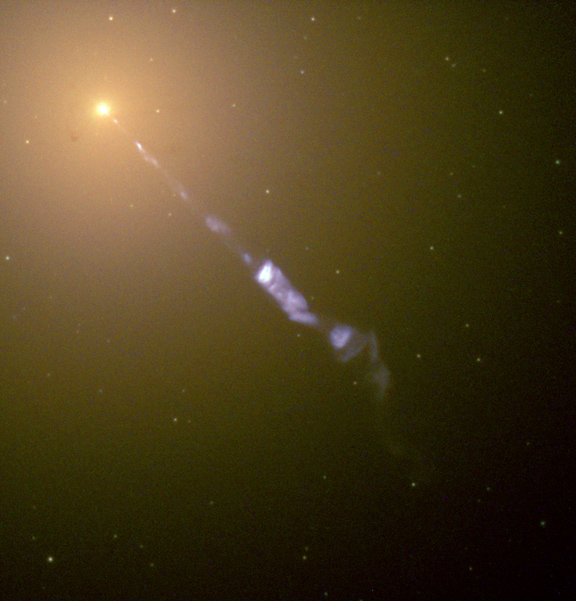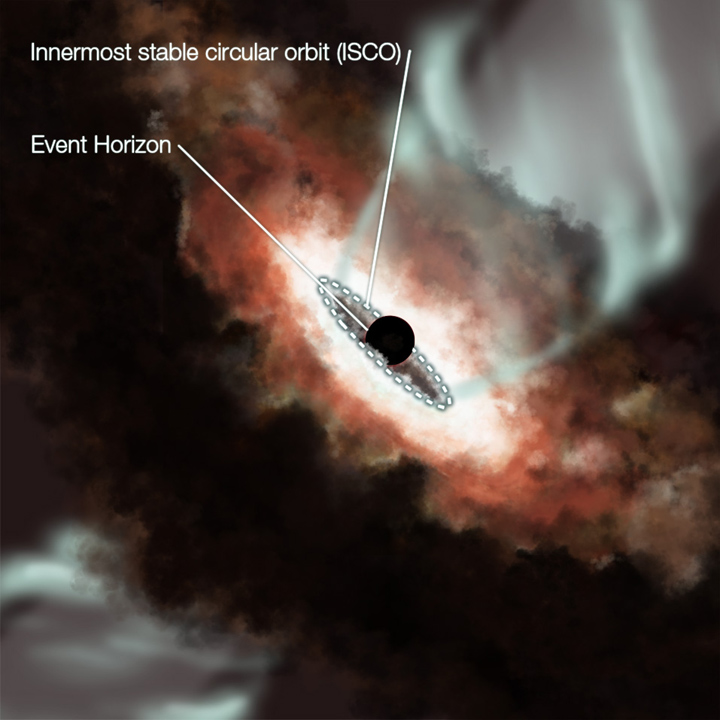Image List
-

Streaming out from the center of the galaxy M87 like a cosmic searchlight is one of nature's most amazing phenomena, a black-hole-powered jet of sub-atomic particles traveling at nearly the speed of light. In this Hubble Space Telescope image, the blue of the jet contrasts with the yellow glow from the combined light of billions of unseen stars and the yellow, point-like globular clusters that make up this galaxy.
NASA and the Hubble Heritage Team -

This artist's conception shows the region immediately surrounding a supermassive black hole (the black spot near the center). The black hole is orbited by a thick disk of hot gas. The center of the disk glows white-hot, while the edge of the disk is shown in dark silhouette. Magnetic fields channel some material into a jet-like outflow - the greenish wisps that extend to upper right and lower left. A dotted line marks the innermost stable circular orbit, which is the closest distance that material can orbit before becoming unstable and plunging into the black hole.
Chris Fach (Perimeter Institute & University of Waterloo)